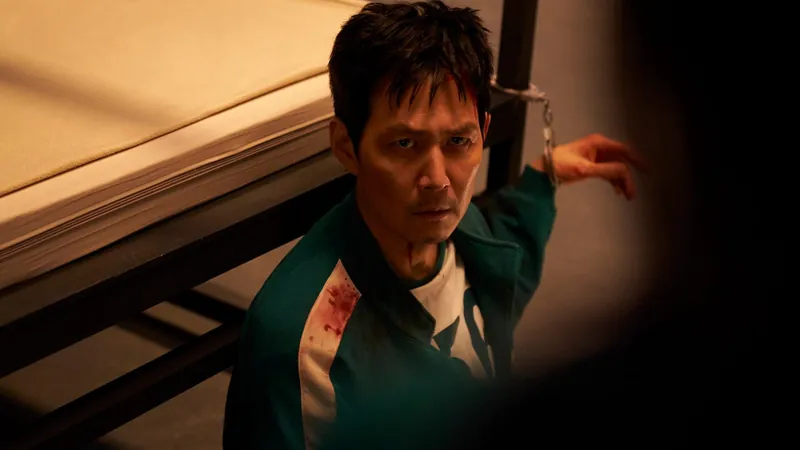
Ukrainian FPV Drones: The Cutting Edge of Battlefield Strategy
2025-01-04
Author: Ting
In a striking real-life application of technological innovation in warfare, a small Ukrainian kamikaze drone has fulfilled its designed purpose in a successful suicide strike against the rear armor of a Russian T-72 tank during a fierce battle in the eastern Kharkiv region late last November. This remarkable event underscores the evolving nature of conflict, where drones have become pivotal assets for modern militaries.
As of December 16, a spokesperson for Ukraine's Defense Ministry proclaimed the significant strides the nation has made in drone production, estimating that the cumulative total of unmanned aerial vehicles (UAVs) produced—ranging from state-sponsored to grassroots initiatives—could exceed 1.3 million by the end of the year. This effort illustrates a broader trend where drone technology has revolutionized warfare, and Ukraine has become a harbinger of this shift.
One drone's journey, from its conception and funding to combat deployment, encapsulates this transformation. Made from a basic quadcopter platform measuring 25 centimeters (about 10 inches) and capable of carrying RPG warheads or equivalent explosives, these drones are swiftly becoming the weapons of choice on the front lines. Despite a high mission failure rate, with many drones not hitting their targets, field operators consider lethal FPV drones as the most feared weapon in active engagements.
What sets the Ukrainian forces apart in this aerial tactics revolution is their establishment of dedicated drone units working in tandem with traditional military branches, such as infantry and artillery. As Russian forces launch substantial offensives, Ukrainian drones are poised to strike like hawks, reasserting the power of mobility and precision over brute force.
The demand for drones is insatiable. To supply this need, Ukraine is witnessing an unprecedented wave of drone production. Everywhere from makeshift workshops to individual apartments, citizens are rising to the occasion, manufacturing UAVs without centralized coordination. Volunteer networks raise funds through social media campaigns, enabling combat units to create their own drones as the need arises.
One notable contributor to this drone innovation narrative is "Sean," a London-based IT specialist who has mobilized to provide support for Ukrainian defenses. Deeply dissatisfied with the British government's response to the conflict, Sean turned his political frustration into action, organizing donations and materials for frontline soldiers. He believes that the outcomes of battles hinge largely on the availability of FPV drones, and through his online platform, UADroneGroup, he continually strategizes ways to increase drone deployment.
Another key figure is Andrey Timofeiuk, a Kyiv entrepreneur and volunteer who ventured into drone manufacturing to support his compatriots in combat. Alongside his team members, including Vladislav Shevchenko, who has already sacrificed a leg while serving, Timofeiuk shifted focus from civilian business to engaging in drone production, resulting in the assembly of drones in record time.
These efforts are not just isolated incidents; they form part of an extensive network of collaboration, with drone assembly instructions disseminated online, enabling everyday citizens—with varying levels of technical expertise—to contribute to the war effort. Many components are sourced from global suppliers like Alibaba, and logistics involve complex communications to ensure frontline units receive the drones they need.
The effectiveness of these FPV drones was recently highlighted when one particular model, serial number D05, was successfully flown during a combat mission, confirming a lethal strike on enemy equipment. Reports indicated the drone's delivery to a reconnaissance unit, showcasing how direct funding and rapid prototyping can arm soldiers with advanced warfare capabilities.
As Ukraine continues to innovate, the partnership of volunteers and combat-oriented units exemplifies a modern military framework that capitalizes on rapid deployment and technological adaptability. This is not just about hardware; it’s about a collective will to fight back against aggression with creativity and resourcefulness.
Timofeiuk and his team reported further batches of drones are already in production, with ambitious plans for enhanced capabilities, including 3D printing of parts locally—an initiative aimed at reducing dependence on external suppliers.
In a strikingly direct commentary, Timofeiuk suggested that these drones, costing approximately $330 to create, stand as a testament to Ukraine’s resilience and ingenuity against the card-carrying military supremacy of a nation like Russia. "These drones can take out a tank worth over $1.5 million," he remarked. "This is a message for the world: we can defend ourselves and innovate through sheer determination.”
As the conflict rages on, Ukraine's drone operators are poised at the forefront of this new phase of warfare, perhaps redefining the parameters of military engagements for years to come.


 Brasil (PT)
Brasil (PT)
 Canada (EN)
Canada (EN)
 Chile (ES)
Chile (ES)
 Česko (CS)
Česko (CS)
 대한민국 (KO)
대한민국 (KO)
 España (ES)
España (ES)
 France (FR)
France (FR)
 Hong Kong (EN)
Hong Kong (EN)
 Italia (IT)
Italia (IT)
 日本 (JA)
日本 (JA)
 Magyarország (HU)
Magyarország (HU)
 Norge (NO)
Norge (NO)
 Polska (PL)
Polska (PL)
 Schweiz (DE)
Schweiz (DE)
 Singapore (EN)
Singapore (EN)
 Sverige (SV)
Sverige (SV)
 Suomi (FI)
Suomi (FI)
 Türkiye (TR)
Türkiye (TR)
 الإمارات العربية المتحدة (AR)
الإمارات العربية المتحدة (AR)